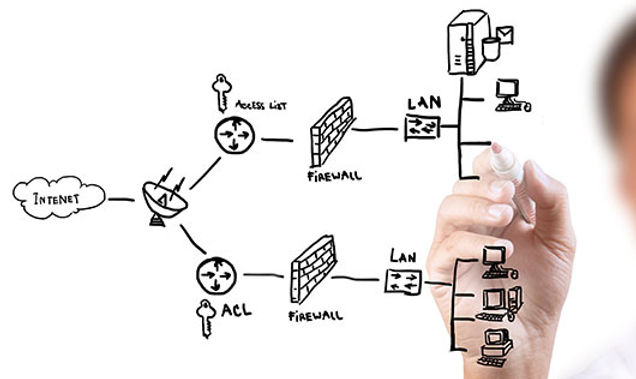- BTI Group
- IT Products Services Articles
- 4 min read
How To Reduce Downtime: 7 Tips to Ensure Business Continuity

For businesses navigating the complexities of the modern market: The stakes are high. Even a momentary hiccup in operations could mean a significant hit to your finances and long-lasting damage to your hard-earned reputation.
Only 5% of business downtime is caused by natural disasters like floods, fires, and wind. The remaining 95% are associated with hardware failures, human errors, and software failures, including inadvertent data loss, device mismanagement, and other accidents.
Our guide aims to provide a roadmap on how to reduce downtime. Keep reading to discover 6 downtime reduction strategies and keep the gears of your business turning seamlessly.
What is Downtime?
Downtime is the amount of time business processes stop working. However, not all downtime is equal. There are 2 types of downtime, planned and unplanned downtime.
What is Planned Downtime?
Planned downtime is when a business stops its operations on purpose to carry out maintenance or updates. When done correctly, unplanned downtime allows your team to upgrade and support your network without disrupting daily operations.
What is Unplanned Downtime?
Unplanned downtime is when business processes stop unexpectedly due to problems like power outages, hardware or software failure, accidents, or natural disasters.
How to Reduce Business Downtime: 7 Tips to Minimize Business Downtime
The 7 steps to reduce downtime and ensure business continuity are:
1. Perform a Risk Assessment
A risk assessment provides a complete overview of your IT infrastructure and the current state of all its components. Businesses often have outdated software, hardware, or equipment that may pose a significant threat. Outdated equipment more likely to fail, and harder to maintain and fix due to the lack of support or replacements.
Performing risk assessments regularly will uncover existing vulnerabilities, increase operational efficiency, and significantly reduce the risk of unplanned downtime
2. Track your Data
Keeping track of your infrastructure performance will not only allow you to identify the cause behind your organization’s downtime, but it will also uncover what is causing downtime in the first place. Leveraging monitoring tools will allow you to track your network performance and notice any under performance trends to create a comprehensive and proactive maintenance plan.
3. Create a Proactive Maintenance Plan
Adopting a proactive approach to network maintenance is key to minimizing downtime and avoiding costly expenses. Being proactive allows you to identify and fix any potential issues before disruptions arises. A proactive approach ensures you avoid costly and unexpected expenses such as software and hardware expenses, and overtime for your employees. BTI’s RMM (Remote Monitoring & Management) as a Service can free your team of the complexities of proactive maintenance while taking care of all your network needs.
4. Train your Staff Regularly
In case of disruptions, every second counts. Awareness and preparedness amongst your workforce are critical to reduce downtime and ensure a swift recovery of your IT systems. Training will ensure a smooth response from your team in case of disaster while allowing them to efficiently handle network related tasks without making errors. According to the Downtime Institute, human error causes 70% of service outages. That’s why employee training is crucial to minimize downtime and ensure smooth IT operations.
5. Establish Clear Communication Protocols
During downtime, clear and efficient communication is essential. Without it, your response may be delayed, and downtime may be extended. To ensure that your communication protocols are effective, make sure your plan:
- Identifies Key Contacts: Ensure that everyone knows who is responsible for what, and who needs to be informed at various levels of the organization.
- States Clear Notification Procedures: Develop a structured way to inform employees, customers, and other stakeholders about the downtime and its impact.
- Delivers Status Updates: Establish regular status updates to provide the latest information on the situation and recovery efforts.
- Communicates with Customer: Communicate with customers and stakeholders to provide them with timely and accurate information about the status of their services.
By establishing these protocols in advance, you can ensure that the right people are informed and can begin working on the response immediately.
6. Create a Disaster and Recovery Plan
Disaster and recovery plans (DRP) are crucial to reduce downtime and ensure your team responds rapidly and effectively in case of crisis. For a DRP to be effective, it must contain detailed and comprehensive instructions on how to respond to any unplanned events such as natural disasters, cyberattacks, and power outages.
An effective backup and disaster recovery plan will allow you to:
- Reduce downtime.
- Limit the amount of damage caused by disruptions.
- Ensure a smooth, effective, and fast restoration process.
- And minimize downtime-related issues.
7. RMM as a Service
BTI’s RMM as a Service is the most efficient and cost-effective way to reduce downtime and enjoy uninterrupted operations. RMM as a Service will not only ensure that every step stated in this guide is met, but it will also give you access to the latest tools and qualified professionals to do everything you need to ensure downtime is not a problem ever again.
RMM as a Service will reduce downtime because:
- You will have access to world-class engineers who will monitor your network 24/7/365
- You will eliminate the costly investments of managing your IT infrastructure in-house for a fraction of the cost.
- Your organization will have access to the latest monitoring, management, and security technologies without the need to make costly investments in acquiring the hardware, software, or training for your team.
- Our compliance management specialist will ensure you meet your specific compliance requirements regardless of your industry.
- You will have a flexible and scalable system that minimizes downtime and scales or descales as you need.
- You will reduce the workload of your IT staff, so they move the needle and focus on more profitable business tasks.
Ready to Reduce Downtime?
The effort you put into minimizing downtime and ensuring business continuity is an investment in your company’s future. By diligently following these 7 steps, you can significantly reduce your vulnerability and be better prepared to handle any unforeseen interruptions to your business operations.
Remember, the key to a successful strategy in reducing downtime is not just the systems you put in place, but the people who operate and maintain them.
In an age where digital presence is synonymous with business continuity, these tips go a long way in securing your operational foundation.
Looking to reduce downtime effortlessly? Talk to BTI today to discover how RMM as a Service can help you reduce downtime for an incredible price and with unmatched results. Schedule your free demo today!






